Habanero peppers are very spicy chili peppers, well known all around the world. The pepper is defined by its high heat level and small, wrinkled shape.
They have a very fruity, unique flavor, but are often found to be too spicy for eating without cooking or preparing first. The habanero pepper has a somewhat mysterious history, with an uncertain origin (more on that later).
If you’re interested in learning more about habaneros, this article is made for you. I’ll share everything I know about the pepper, from the best ways to use the peppers, to how to grow them yourself at home, and more!
Skip Ahead:
- Where are habaneros from?
- Habanero characteristics
- Habanero heat level
- Varieties of habaneros
- Growing habaneros
- Using habaneros at home
Where Are Habaneros From?
The word “habanero” literally means “from Habana” or Havana, Cuba. In the modern-day, this region does grow the peppers, but it is unlikely that habaneros were first found on the island. The name is more likely a result of Habana being one of the first regions to cultivate habanero peppers.
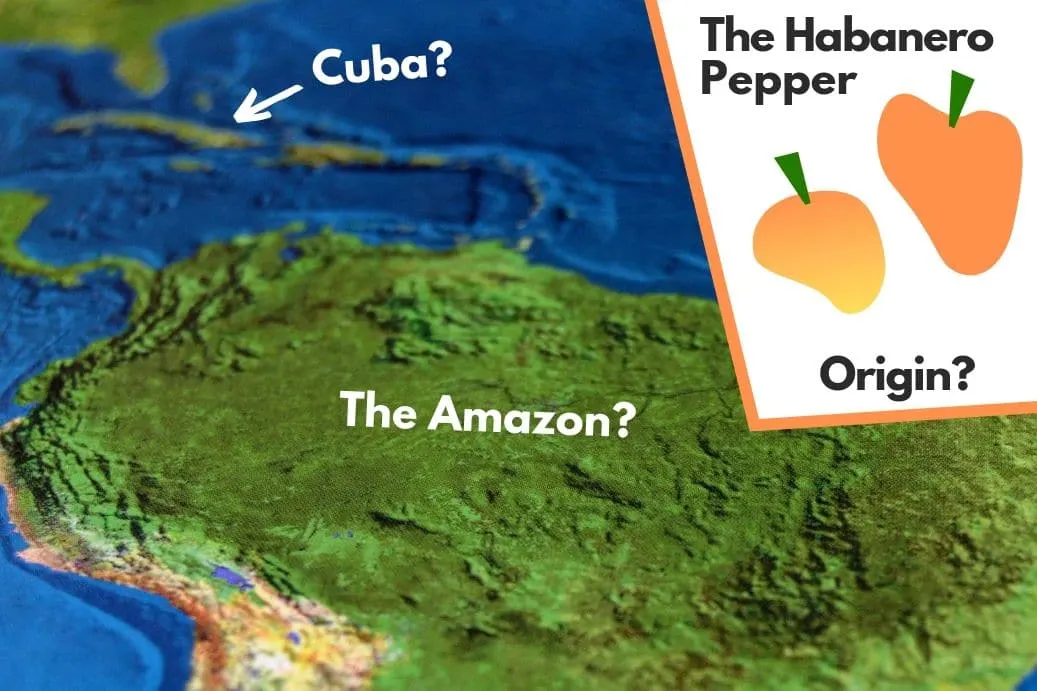
As mentioned before, the history of the habanero is a bit uncertain. However, being of the Capsicum chinense species, the general region that the habanero pepper came from is well accepted.
If you go back far enough, habanero peppers originate in the lowlands of the Amazon, later spreading North into Mexico and the West Indies through trade.
Today, the pepper is cultivated on the Yucatan peninsula of Mexico, where an estimated 1400 acres (~2 square miles) of land are dedicated to growing habanero peppers. The peppers are also grown extensively in North America and are widely available at markets across North and South America.
Characteristics Of The Habanero Pepper
The habanero, like all of the C. chinense varieties of pepper, has a distinct floral aroma. The common orange habanero has a medium-sized pod. However, there are a range of habanero types, including red, orange, yellow, brown, and even purple varieties.
The plant’s height can range from about 2-5 feet depending on the environmental conditions, with an average of around 3 feet in a typical North American garden.
When grown as perennials, some habanero plants have grown to more than 8 feet tall in tropical climates.
DeWitt, Dave. The Field Guide to Peppers. Portland: Timber Press 2015. Print.
Plants are very prolific, often producing hundreds of peppers on a single plant in one growing season. However, the shining characteristic of the habanero pepper is not its look, but it’s intense heat.
Habanero Pepper Heat Level (Scoville)
The habanero pepper is a hot one. The variety has a very wide range of heat levels, but it is generally accepted that habanero peppers have a Scoville rating ranging from 200,000 – 350,000 SHUs. However, one study has shown levels reaching over 800,000 SHUs with favorable soil, temperature, and humidity levels for producing capsaicinoids.
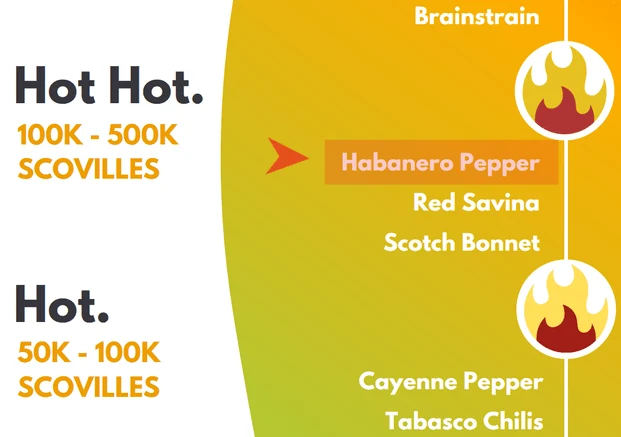
Basically, what this means is that the habanero pepper is very spicy. A single pepper can go a long way toward making a large dish very hot. If you decide to cook with habaneros, but don’t want too much heat, try removing the placenta and seeds (diagram). This is where the highest concentration of capsaicin exists.
Tip: Always be sure you use gloves when handling your habaneros. Even a tiny dab of pepper juices can irritate the skin, and especially the eyes.
Other Types Of Habanero Peppers
Since its discovery, botanists and plant breeders alike have been producing new varieties of the habanero. With plant breeding becoming more and more popular in recent years, there are now several types of habanero peppers that you can try growing yourself.
Here are a few of the interesting varieties of habanero available on the market:
Chocolate Habanero
Grow these to put some interesting color into your garden. Maturing to a deep brown color, the chocolate habanero is a beautiful variety of the pepper. Still very spicy with a unique, delicious, fruity flavor, this pepper goes well in hot sauces or dried pepper powders.
Habanada
Love the tasty flavor of the habanero, but want to be able to eat more than 1/4 of a pepper? The habanada was bred to have the same great taste, but none of the heat of the original habanero.
If you have experience with habaneros, tasting a habanada is strange the first time, with the expectation of intense heat. This may be a novelty, but it can be great for cooking and making less spicy hot sauces with the great habanero flavor.
Get seeds or live habanada plants on Burpee here.
Mustard Habanero
This is another color variation of the habanero. Our plants produced huge, wrinkled pods that were especially spicy. Seeds can be difficult to find for this habanero type.
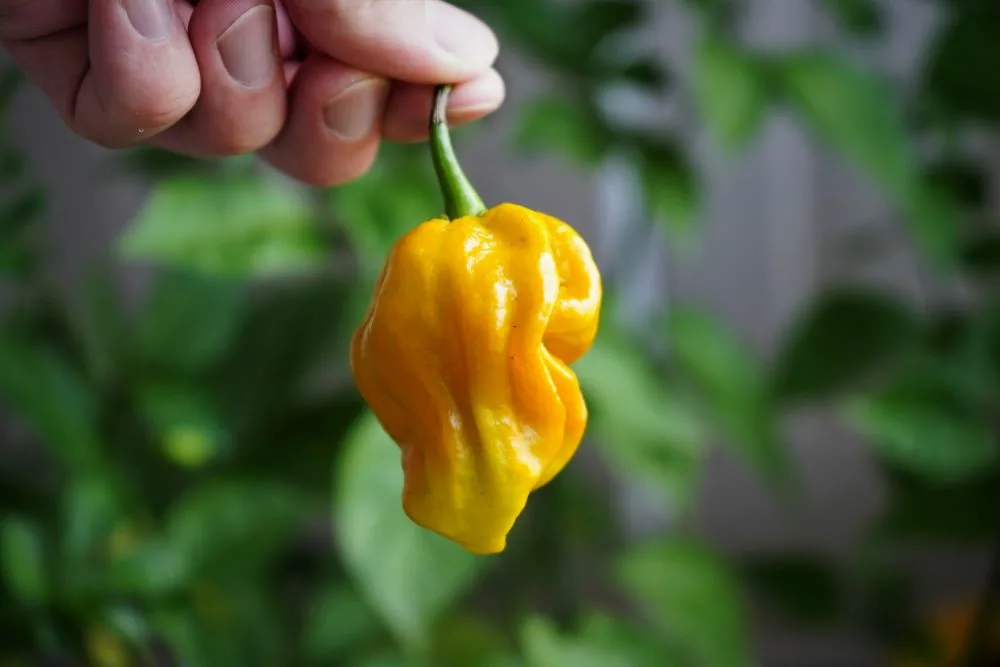
Habanero Red Savina
One of the hottest varieties of habanero, the Red Savina ranks around 500,000 SHUs on the Scoville scale. This makes it an intensely hot pepper, bred in California over many years to produce more capsaicin. If the regular habanero just isn’t hot enough for you, the red savina will step things up considerably!
Growing Habanero Peppers
Growing peppers at home is fun and rewarding. Most varieties take very little maintenance, and the habanero plant in particular tends to produce lots of peppers every year.
If you like spicy food, growing one or two plants, either in pots or in the ground, is a great way to get plenty of heat into your home cooking! Learn to grow habanero peppers here >
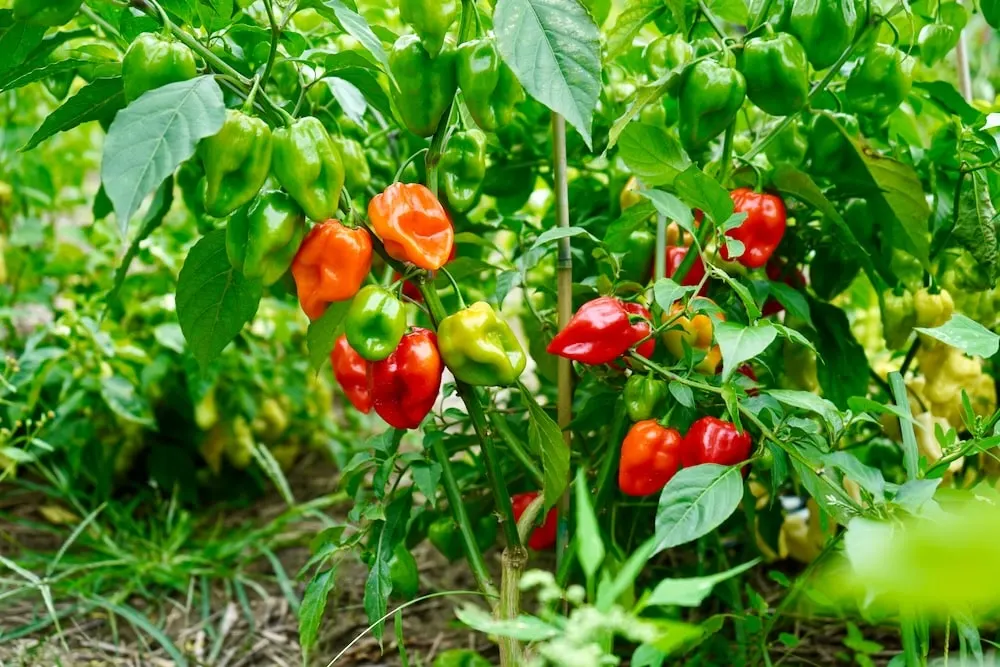
Where to buy habanero seeds
Peppers seeds are available from many online retailers. Learn more about our favorite seed sellers where you’ll find countless habanero pepper options.
When to plant habanero seeds
Habaneros tend to have a longer growing period than sweet peppers. Originating from the Amazon forest, the plants need lots of direct sunlight and a long warm season to produce prolifically.
This means that most Northern growers will need to start their habanero plants indoors in late winter, before transplanting outdoors for the growing season.
For most growers in hardiness zones 4-7, habaneros should be planted indoors between February 15 – March 20th. In other words, start your seeds about 6-8 weeks before your last local frost date.
How long for habaneros to ripen
Most habanero varieties are very late to harvest, with peppers ready to pick around 80-90 days after transplanting outdoors. This growing duration can vary depending on the amount of direct sunlight your plants get during the season.
Most seed packets will give you a harvesting window for your particular pepper strain, so be sure to keep the seed packet after planting for reference. If the expected harvest date has arrived and your peppers don’t seem ready, this could be due to lack of nutrients or lack of sunlight. Try to position your habanero plants in the perfect place to get the most sun!
How to get more habaneros from your plants
Habanero plants typically produce 50+ peppers per plant in ideal conditions. This means that if your plant only produces 5 or 10 peppers, you’re missing out! There are a number of ways to get more peppers per plant, including fertilizing, increasing sunlight, and improving your soil.
Learn our methods for increasing yields here
How to know when habaneros are ripe
Some people have difficulty knowing when to pick habanero peppers. Thankfully, habaneros give us a number of signs that they are ready to be picked.
Signs of ripe habaneros:
- Peppers have turned orange or red
- 90+ days have passed since planting outside
If your habaneros are still green, they are not ready to be picked. Be patient, as habaneros take a long time to mature! People commonly pick underripe habaneros because they can often appear to stay the exact same color and shape for weeks before beginning to turn orange or red. If you wait, they will eventually turn color and improve in flavor.
Note: If your habaneros are still green when the threat of frost arrives, it is okay to pick your peppers before ripening. They are still edible, but they may be less spicy and/or flavorful. The seeds may also be underdeveloped.
What To Do With Habaneros
Since habanero peppers are so potent, it is common to preserve them for use throughout the year. There are many options for doing this, and most of them are quick and easy, making your harvest last much longer. Here are a few easy methods to use your habaneros for the long term.
Make habanero hot sauce
Hot sauce is quite possibly the best use for fresh habaneros. Making hot sauce at home is also a fun way to use up your peppers. You can experiment with different flavors and make a truly unique hot sauce to enjoy at home and with friends.
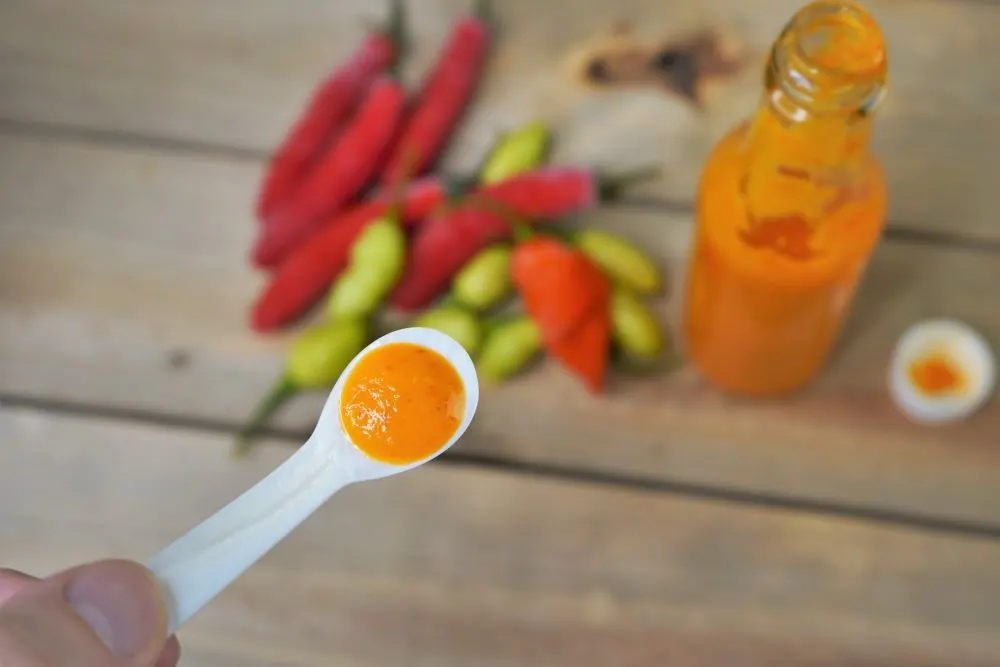
Habaneros work well when mixed with other pepper varieties, and we particularly like them with tropical fruits. This gives sauces a great blend of heat and flavor that goes well with lots of food, like pizza, tacos, and much more.
If you don’t want to make your own, try some of our favorite habanero hot sauces. To name a few, we love Yellowbird, Secret Aardvark and Kitchen Garden Farms sauces.
Make habanero powder
Dehydrating and grinding habaneros is a great way to keep your peppers for 1 year or longer. Dried pepper flakes or powder are great to use as a meat rub or for spicing up soups or stews. They will keep for a long time outside of the refrigerator, and it is simple to do.
Make spicy salsa
Salsa is traditionally made with jalapeño peppers, but if you like it with some extra kick (and we assume you do…) try adding in some fresh habaneros. Not only does it spice things up, but the flavors work really well with the other ingredients in salsa.
Another great way to use habaneros in salsa is to smoke them first or roast them to help reduce the intensity of heat. This can also add great rich flavor to your peppers before using them in a tasty salsa.
Tip: Try adding in some peach or pineapple for a sweet and spicy tropical take on your homemade habanero salsa.
Give them away
Don’t forget about your friends or family members who like spicy food! Giving fresh peppers, or preserved peppers as a gift is a great present. I can’t tell you how happy it makes me when I receive a new hot sauce or spicy treat as a gift. Share your bounties!
Other ways to preserve
If you want a more complete list of preservation methods for your habaneros, see our guide to preserving peppers here. We cover all of the most popular methods to keep your hot peppers from spoiling for longer.
I hope this article helped you learn more about the habanero pepper. Good luck growing and cooking with your habaneros, and be sure to share your recipes and gardens with us!

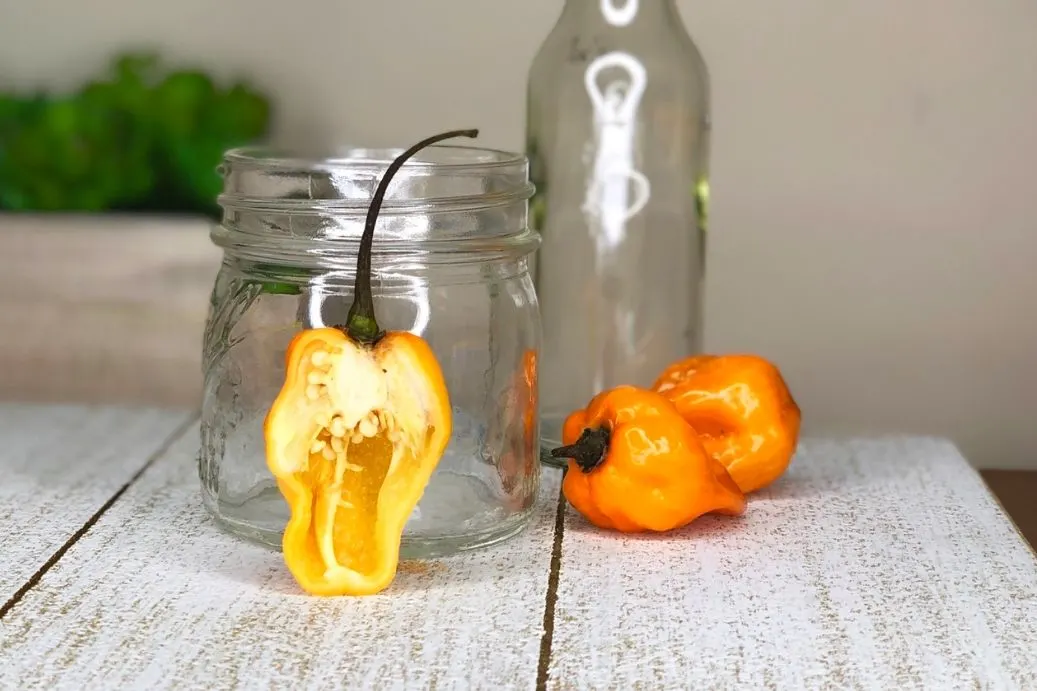
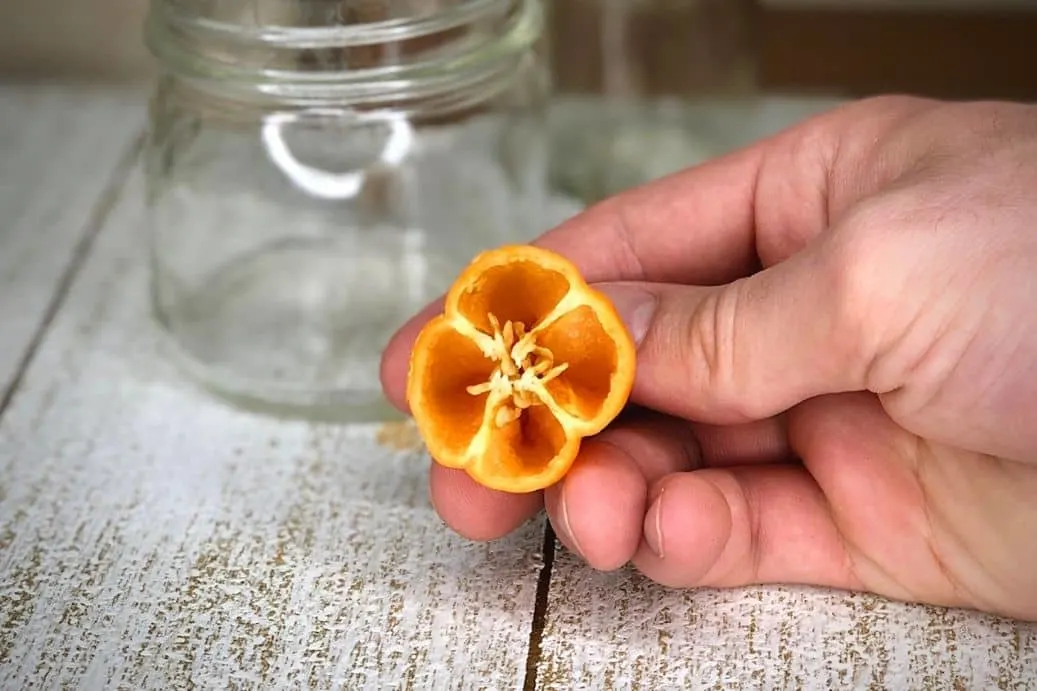

Anthony S
Saturday 9th of September 2023
My Habanero plants have gone absolutely insane this year. I planted 3 seedlings in 5 gal buckets. I used an organic raised bed garden soil and used a 10-15-10 plant food every 7 days for the first 2 months of the season then switched to every 14 days for the next 2 months then stopped with the fertilizer. I only watered every 2-3 days. The plants got full sun from sunrise until about 3 pm they were shaded in the most intense part of the late afternoon sun. At the beginning of the season I pinched the flowers off until the plants got some size to them about 12” tall, then let the flowers set. I planted them at the end of May and had my 1sr harvest of 18 ripe peppers on August 12, my 2nd harvest of 40 peppers August 20th, 3rd harvest of 56 peppers August 26th, 4th harvest of 145 peppers September 2nd, 5th harvest of 88 peppers September 9th. That’s 347 peppers !! From 3 plants. I will probably have one or two more picks. I’m thinking I’ll probably be looking at 400 peppers total this year. The plants have actually started flowering again! unfortunately I won’t have the season left to set more fruit.
Doug Galloway
Monday 8th of August 2022
Thanks for the article. My question is that I picked 50 Habaneros that are green. I have laid them in the sun to ripen up and change colors. Does this work and a slow process? I not picking anymore until the turn on the plant. Thanks
peppergeek
Monday 8th of August 2022
It depends how early you picked the green habs. If they were close to begin ripening, then they should turn color off the plant. However, if it was too early, then they will remain green. If they haven't started to turn after 5-7 days, I'd just use them green (they should still be tasty and hot)
MAGNUS AWO-OSAGIE
Thursday 29th of July 2021
excellent presentation on habanero, i am interested in growing the crop and would appreciate any assistance. i am interested in knowing the agronomic details such as: seed rate per hectare, yield in metric tonnes, plant density, etc. i will be grateful for your response. Thank you. magnus.
Terrence Hosking
Wednesday 20th of January 2021
I am growing a variety of different peppers at the moment (new to this pepper growing stuff!) any my capsicum and cayenne peppers are already heavily fruiting, the habenero plant has a mixture of small yellow flowers and bundles of spikes for sticking in animal fur (best way to describe them) is this normal? Concerned this isnt a habenero plant as I can't find reference to the spikes anywhere on the net!
peppergeek
Wednesday 20th of January 2021
Hm, a picture would really help - if you can, DM us a picture on Instagram so we can have a look at the plant. However, that description sounds unlike any pepper plant I've ever grown...
John
Monday 26th of October 2020
I planted 12 Habanero plants and 4 Jalapeno plants in plastic pots . Had to water more regular but still every 2 or 3 days.2 days as the temp went higher.As frank had said only roots. Used granular fertilizer ,dissolved in water .(From local greenhouse (The Mill ) near port colborne . Long wait for peppers but got about 25-30 per hab plant.